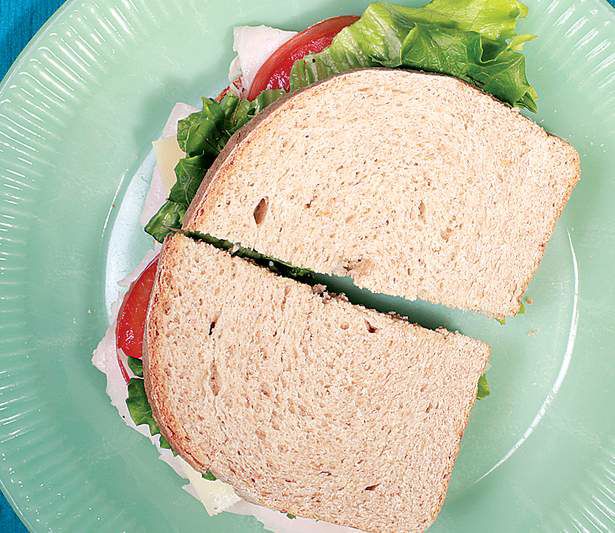Which sandwich bread works best?
Published 4:00 am Wednesday, January 27, 2010

- Homemade Wheat Bread
When done right, a sandwich can be portable, affordable, delicious and healthy — a practically perfect provision.
We all have our favorite sandwich fillings, from ham and swiss to egg salad with herbs, but sometimes we lose focus on what holds it all together: the bread.
Not today. We took five sandwich bread options that someone looking to be reasonably health-savvy might choose and assessed them each based on cost, convenience, taste and nutrition.
We shopped on a recent day at our local grocery stores and compared cost based on the regular prices, not considering what was on sale that day . The sandwiches we tasted were all made with the same basic turkey, cheese and condiments. Our panel was made up of four newsroom staffers.
When it came to nutrition, we spoke to Lori Brizee, a registered and licensed dietitian who owns Central Oregon Nutritionists. She said when comparing different foods, first read the nutrition labels.
Count calories, but consider your caloric needs. If you’re a teenage boy or if you’re making a sandwich to take with you on an active outing, a higher-calorie option’s probably just fine. Brizee also recommends to look for high fiber, low sugar (Brizee said she doesn’t think there’s a major difference between how high-fructose corn syrup and regular sugar affect the body; both need to be limited) and reasonable sodium levels. Brizee also said to consider protein a plus and to keep fat low, or in the case of saturated and trans fats, to try to avoid them altogether.
Here’s how our 5 sandwiches stacked up:
• Franz made With Whole Grain White bread
Cost: $2.99 for a loaf, about 10 sandwiches per loaf, about 29 cents per sandwichNutrition: In two slices, 140 calories, 1.5 grams of fat, 270 milligrams of sodium, 5 grams of dietary fiber, 4 grams of sugar and 6 grams of protein.Bottom line: “It’s got more fiber than white bread would have,” Brizee said, but it’s not 100 percent whole grain. There are better options, health-wise, but it’s a good place to start “if someone’s trying to work toward more whole grains.”Convenience: Store bought, easy to use and eat.Taste: Thumbs down. Our panel called the bread “flavorless,” “overprocessed-tasting” and “cardboardy,” though there were some “soggy” parts.
• Orowheat Sandwich Thins, 100 percent whole wheat
Cost: $3.39 per package of eight rolls, about 42 cents per sandwichNutrition: In one pre-sliced roll, 100 calories, 1 gram of fat, 230 milligrams of sodium, 5 grams of dietary fiber, 2 grams of sugar and 5 grams of protein.Bottom line: Brizee said for people looking to limit their calories, these are a good nutritional option, with low calories and fat, a good amount of fiber and moderate sodium levels.Convenience: Store bought, easy to use and eat.Taste: Thumbs up. Panelists said it tasted “nutty,” with a nice balance of “chewy” and “soft.” It was thin enough to let the fillings shine, but still had a satisfying, if mildly processed-tasting, grain to it.
• Flatout Flatbread, Healthy Grain
Cost: $3.49 per package of six, about 58 cents per sandwichNutrition: In one flatbread, 100 calories, 2.5 grams of fat, 280 milligrams of sodium, 8 grams of dietary fiber, 1 gram of sugar and 9 grams of protein.Bottom line: Brizee said the ingredients made this a nutrition winner. “That sounds like a really healthy bread,” she said.Convenience: Store bought, easy to use, though if you like your bread toasted, beware, the package warns, “To avoid possible fire, do not use in toaster oven.”Taste: Thumbs down. Our panel did not like this product, which had a “Styrofoam taste” with a bit of “grittiness.”
• Sara Lee Deluxe Bagels, Honey Wheat
Cost: $3.79 for six, about 63 cents per sandwichNutrition: In one bagel, 290 calories, 1.5 grams of fat, 620 milligrams of sodium, 4 grams of fiber, 10 grams of sugar and 11 grams of protein.Bottom line: “That’s a fairly high calorie (choice) for the outside of your sandwich,” Brizee said. But if you’re OK with higher calories, it’s probably a nice, filling option. She also said the whole wheat bagel was a much better choice than a similar white bagel.Convenience: Store bought, easy to use and eat.Taste: Thumbs up. While we had some debate about whether the honey-sweet flavor would work with every filling, the tasters agreed the bagels were “chewy, but not too chewy” and had a satisfying wheat flavor without being overly grainy. Overall, “pretty delicious.”
• Homemade wheat bread
Our home baker used the recipe for light wheat bread at the cooking blog Smittenkitchen.com.Cost: It depends on your recipe, but we figured the ingredients we used cost $1.96; if you made eight sandwiches from the loaf, about 25 cents per sandwich. According the Oregon State University Extension Service, making your own bread saves an average of one-half the cost of commercially made bread of similar quality.Nutrition: Analyzing the recipe with an online calculator at www .nutritiondata.com, we figured two slices would have about 278 calories, 4 grams of fat, 478 milligrams of sodium, 4 grams of dietary fiber, 4 grams of sugar and 10 grams of protein.Bottom line: Brizee said the main nutritional benefit of making your own bread is that you can adjust the ingredients to suit your needs and taste. The recipe we used called for both white and whole-wheat flour, and Brizee said she’d replace more of the white flour with whole-wheat flour, as well as adding nutritious extras like ground flaxseed, nuts and oats.“I think we respect food more when we make stuff at home,” Brizee said. “I think it’s really good for people to be more involved in the food we’re making.”Convenience: You’ll spend most of a day making this bread, though much of that time you’ll just be waiting for the bread to rise. Without preservatives, you will want to freeze it or use it quickly. When slicing, you can control how thick or thin you like your pieces, which also gives you some control over calories.Taste: Thumbs up. We admitted we liked knowing it was homemade, and the recipe we tasted was “yeasty,” “nutty,” “bready” and “light,” if a bit dry.








